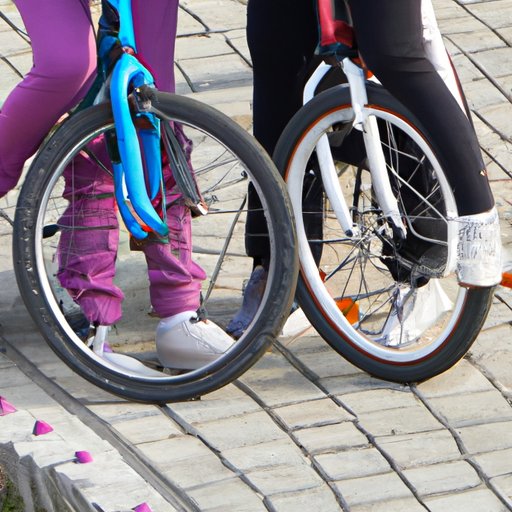Introduction
Riding a bike is one of the most beloved activities for children, but it can be difficult to learn. Many children start by using training wheels, which act as a stabilizing force while they are learning. But when it’s time to transition to riding without training wheels, many parents and children are not sure how to begin. This article aims to provide a step-by-step guide for learning how to ride a bike without training wheels.
Learn the Basics
The first step in learning to ride a bike without training wheels is to understand the basics of balancing and pedaling. Balancing is the key to staying upright on the bike, and it takes practice and coordination. The rider must continuously adjust their body weight to stay balanced while in motion. Pedaling is also important, as this is what propels the bike forward. It’s important to practice pedaling in a controlled environment, such as a flat, open area.
Start Slow
Once the basics have been mastered, it’s time to start practicing on a bike. It’s best to start slow and learn in a flat, open area where there aren’t any obstacles or hills. This will allow the rider to focus on balancing and pedaling without worrying about additional challenges. It’s also important to take regular breaks and make sure the rider is comfortable with each step before moving onto the next.
Use a Balance Bike
A balance bike is a great way to make the transition from training wheels to riding without them. A balance bike is a two-wheeled bicycle without pedals that the rider straddles and pushes along with their feet. This helps the rider get used to balancing and controlling the bike without having to worry about pedaling. Once the rider is comfortable with balancing and controlling the bike, they can then move onto a traditional bike with pedals.
Find a Friend
It can be helpful to have a friend or family member to help with the transition from training wheels to riding without them. Having an experienced rider nearby can provide support and guidance as the rider learns. They can offer advice and tips to help make the process easier.
Increase Difficulty Slowly
Once the rider is comfortable with balancing and pedaling, it’s time to start increasing the difficulty level. Start with flat surfaces and gradually progress to inclines and declines. As the rider becomes more confident, they can start to add obstacles and try different terrain. It’s important to increase the difficulty level slowly and only move onto the next step when the rider is ready.
Wear Protective Gear
Whenever riding a bike, it’s important to always wear a helmet and other protective gear. Wearing a helmet can help protect the rider from head injuries if they fall off the bike. It’s also important to wear elbow and knee pads, as well as brightly colored clothing to make the rider more visible to drivers.
Conclusion
Learning to ride a bike without training wheels can be a daunting task for both parents and children. But with the right steps and guidance, it can be a fun and rewarding experience. To successfully ride a bike without training wheels, it’s important to understand the basics of balancing and pedaling, start slow and practice in flat, open areas, use a balance bike to get used to balancing, find a friend to help, increase difficulty levels slowly, and always wear protective gear.


